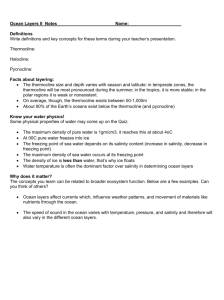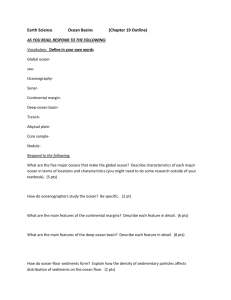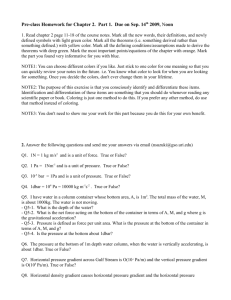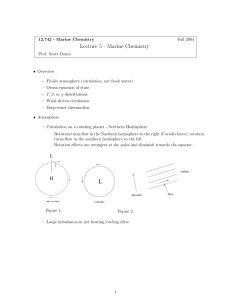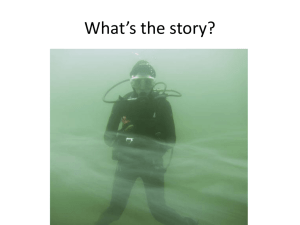EES 113- OCEANOGRAPHY LAB
advertisement
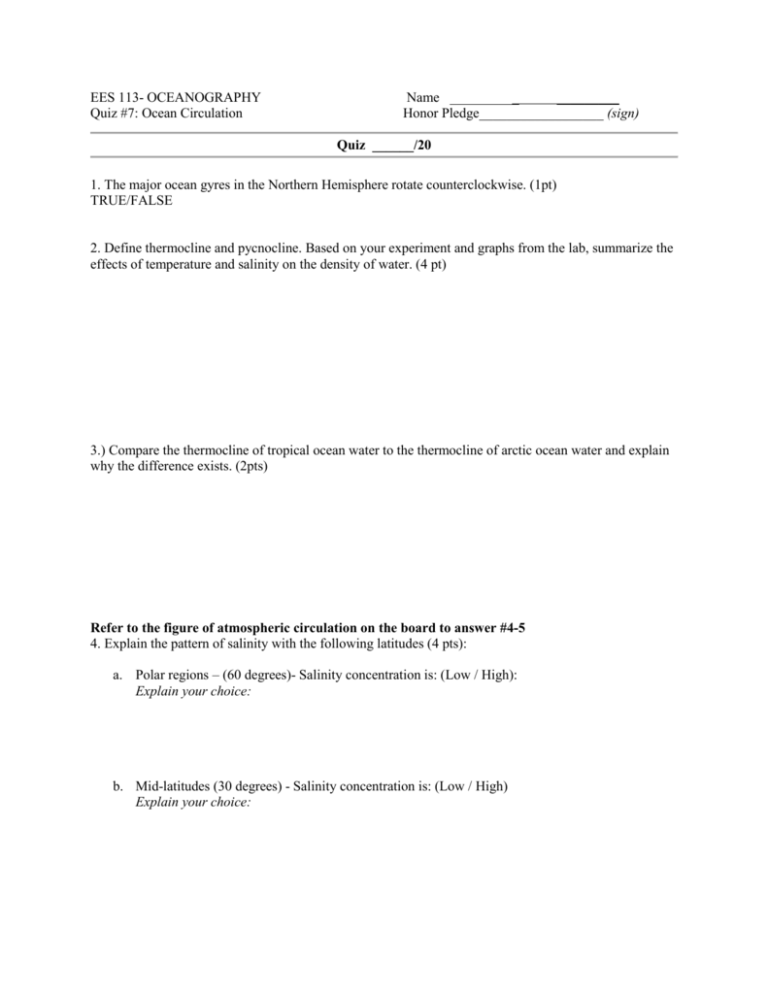
EES 113- OCEANOGRAPHY Quiz #7: Ocean Circulation Name __________ _________ Honor Pledge__________________ (sign) Quiz ______/20 1. The major ocean gyres in the Northern Hemisphere rotate counterclockwise. (1pt) TRUE/FALSE 2. Define thermocline and pycnocline. Based on your experiment and graphs from the lab, summarize the effects of temperature and salinity on the density of water. (4 pt) 3.) Compare the thermocline of tropical ocean water to the thermocline of arctic ocean water and explain why the difference exists. (2pts) Refer to the figure of atmospheric circulation on the board to answer #4-5 4. Explain the pattern of salinity with the following latitudes (4 pts): a. Polar regions – (60 degrees)- Salinity concentration is: (Low / High): Explain your choice: b. Mid-latitudes (30 degrees) - Salinity concentration is: (Low / High) Explain your choice: 5. Recall from lab that the warm currents of the Gulf Stream collide with cold winds from the Arctic. Heat evaporates from the Gulf Stream and is carried towards western Europe, giving it a temperate climate. The water left behind is cooler but also saltier, owing in part to the contribution of high salinity waters from the Mediterranean Sea. This cool, salty water sinks in the Arctic, where it starts to flow south. This process acts like a pump, keeping the Global Ocean Conveyor Belt circulating around the planet. Describe what would happen if accelerated global warming caused the Greenland Ice Sheet to melt, depositing massive volumes of fresh water into the surface of the Arctic Ocean. (2pts) 6. Under normal conditions, the fisheries off the coast of Peru are some of the richest in the world. a.) List the phenomenon responsible for this, and explain why this makes the fishing better. (2 pts) b.) Similar to what you did in lab, use arrows to label the following in the diagram below: prevailing wind direction, net transport of surface waters, and deep-water currents. Hint: think about your answer from question one (2 pts) 7. During El Niño episodes, westward blowing trade winds off the coast of Peru weaken and allow warm water to travel eastward across the Pacific Ocean, deepening the thermocline and shutting down upwelling. Describe why El Niño events would cause a massive die off in marine life. (2 pts) 8. How does Ekman transport affect the net transport direction of surface waters relative to prevailing wind direction? (1 pt)
